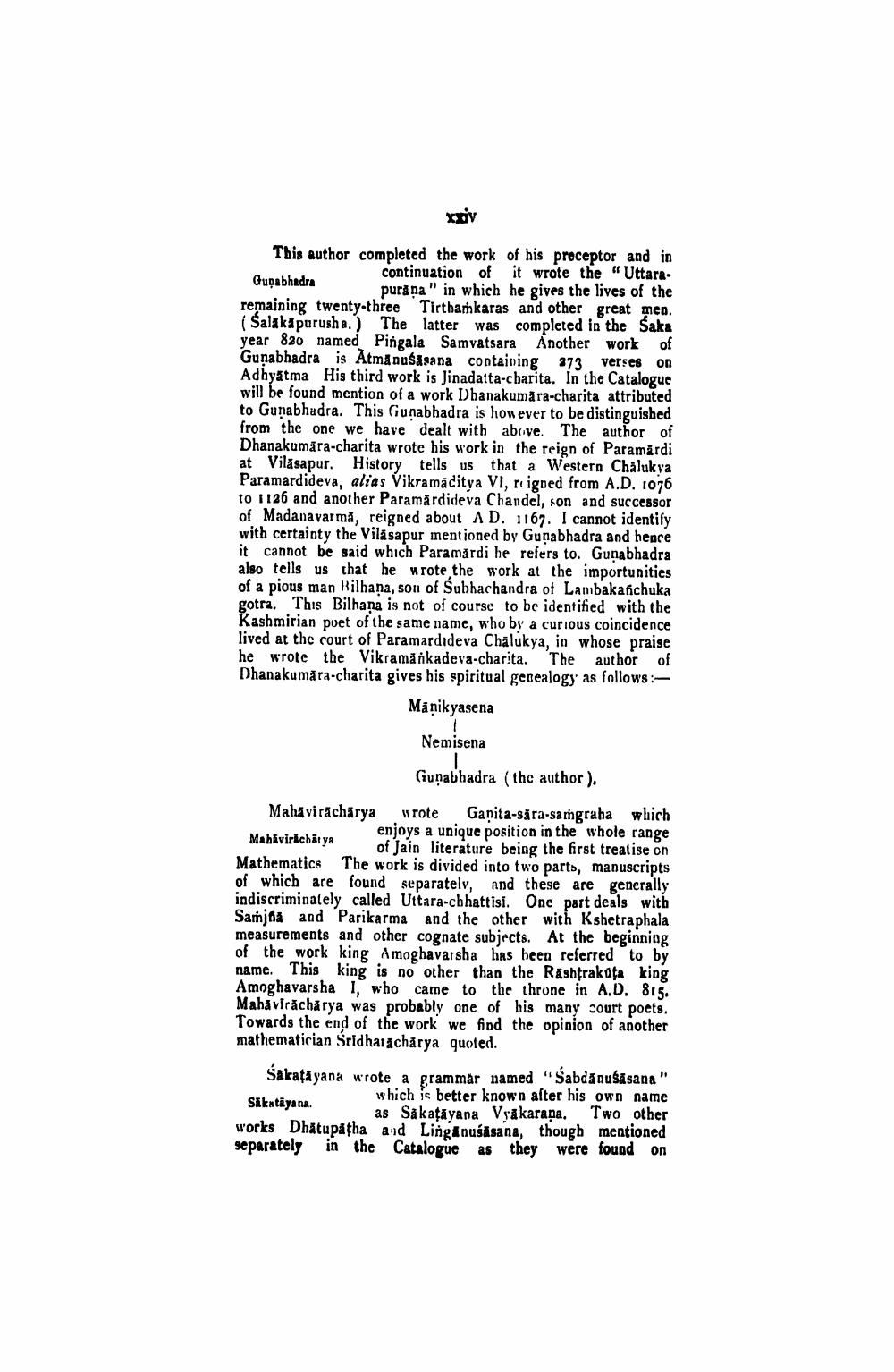________________
Xxiv
AJRA
This author completed the work of his preceptor and in
continuation of it wrote the "Uttara. Gugabhadra
purana" in which he gives the lives of the remaining twenty-three Tirthamkaras and other great meo. (Salakapurusha.) The latter was completed in the Saka year 820 named Pingala Samvatsara Another work of Gunabhadra is Atmanusasana containing 373 verses on Adhyatma His third work is Jinadatta-cbarita. In the Catalogue will be found mention of a work Dhanakumāra-charita attributed to Gunabhadra. This Gunabhadra is however to be distinguished from the one we have dealt with abrive. The author of Dhanakumāra-charita wrote his work in the reign of Paramardi at Vilasapur. History tells us that a Western Chalukya Paramardideva, alias Vikramaditya VI, riigned from A.D. 1076 to 1126 and another Paramārdideva Chandel, son and successor of Madanavarma, reigned about AD. 1167. I cannot identify with certainty the Vilasapur mentioned by Gunabhadra and hence it cannot be said which Paramárdi he refers to. Gunabhadra also tells us that he wrote the work at the importunities of a pious man Bilhana, son of Subhachandra of Lambakafichuka gotra. This Bilhana is not of course to be identified with the Kashmirian poet of the same name, who by a curious coincidence lived at the court of Paramardıdeva Chalukya, in whose praise he wrote the Vikramănkadeva-charita. The author of Dhanakumāra-charita gives his spiritual genealogy as follows:
Māņikyasena
Nemisena
Gunabhadra (the author ).
Mahaviracharya wrote Ganita-såra-sangraha which Mahavirkchär ya
enjoys a unique position in the whole range
YA of Jain literature being the first treatise on Mathematics The work is divided into two parts, manuscripts of which are found separately, and these are generally indiscriminately called Uttara-chhattisi. One part deals with Samjna and Parikarma and the other with Kshetraphala measurements and other cognate subjects. At the beginning of the work king Amoghavarsha has been referred to by name. This king is no other than the Rashtrakata king Amoghavarsha I, who came to the throne in A.D. 815. Maha viracharya was probably one of his many court poets. Towards the end of the work we find the opinion of another mathematician Sridharacharya quoted.
Sakata yana wrote a grammar named "Sabda ousasana"
which is better known after his own name Sikatāyana.
as Sakațāyana Vyakarana. Two other works Dhātupatha and Linginuśksana, though mentioned separately in the Catalogue as they were found on




